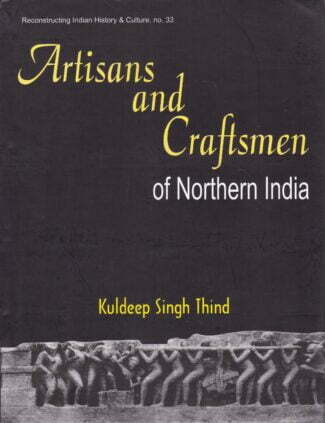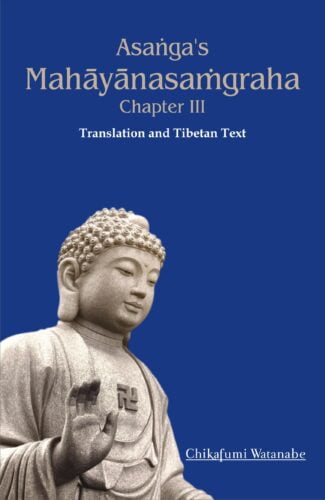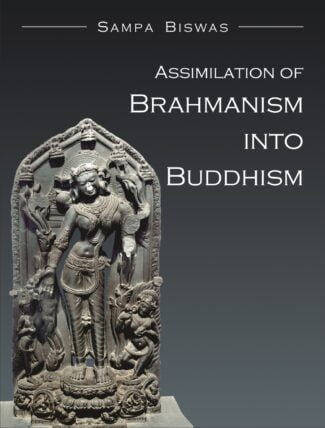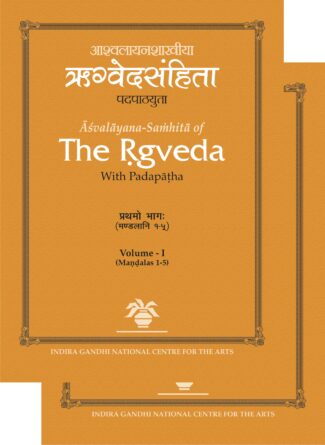Showing 71–80 of 1165 results

This book gives exhaustive and valuable insights into all aspects of the artisans and craftsmen of northern India who played a key role in the evolution of life between the seventh and twelfth centuries ce. This critical study examines the socio-economic conditions of the various categories of workers in stone, metal, clay, leather, cotton, salt, and other industries.
The basic aim of the book is to expose the major contributions of artisans and craftsmen in portraying the society in different perspectives. These artisans and craftsmen, were drawn mostly from the shudras, lower caste of the community, suppressed and have-nots section of the society, but were highly talented. The work is also designed to create interest among the reader and scholars alike, to understand the society of the period under reference through the immortal art of these creative people. The artisans such as potters, weavers, carpenters, architects, sculptors, brick-makers, metallurgy and metal workers, leather workers, painters, and the workers engaged in the profession of ivory, glass and mirror, perfume and cosmetic, musical instrument, oil, salt and liquor makers, etc. were the heroes of that time, who not only met the day-to-day requirement of the then society, but also portrayed different aspects of their life, in its true color, through their workmanship. It was the architect who designed and constructed houses to live in, as well as water tank, well and channel, royal building, stupa, temple and fort, bridge, pillar and rock-edict etc., which met the need of the society.
Today, we feel proud of the rich heritage of old Indian art and architecture, credit for which solely goes to the then artisan who crafted immortal creations. However, the invaluable contribution made by the historians in immortalizing their creations, by putting them in black and white, is no less important. It is the historian, whose mighty pen has immortalized not only Ashoka the great, as a king but also the creators of the stupas of his times on equal footings. It is with this aim in view that the present book has been presented to the posterity, in order to pay rich tributes to the creators of our rich cultural heritage.
Unluckly there was no proper institutionalized provision for the education of artisans and craftsmen, so generally the former adopted the occupation of their parents and hereditary skill was enhances as it was transferred from father to son, and generation to generation. Contemporary sources reveal that the social stautus of artisan class was based on the nature and economic conditions of a particular profession.
आर्यभटीय प्राचीन भारत के महान् ज्योतिषविद् एवम् गणितज्ञ आर्यभट (476-550) की प्रमुख रचना है। आर्या—छन्द में रचित 121 श्लोकों से युक्त चार अध्यायों की आर्यभटीय भारतीय गणित एवम् खगोलिकी का एक सैद्धान्तिक ग्रन्थ हैए जिसका व्यापक प्रभाव मध्यकालीन भारत के अतिरिक्त अरब देशों में भी रहा।
आर्यभट ने सौर–मण्डल के भूकेन्द्रिक सिद्धान्त को प्रतिपादित किया हैए जिसमें सूर्य और चन्द्रमा अपने-अपने अधिचक्रों पर चक्कर लगाते हुए पृथ्वी का चक्कर लगाते हैं। ग्रहण के स्वरूप तथा उसकी गणना.विधि प्रस्तुत की गई है। वह पहले खगोलविद् रहे जिन्होंने पृथ्वी की अपने अक्ष पर भ्रमण करने की अभिकल्पना की है। दशमलव के चार अंकों तक पाई (π) का शुद्ध मान ज्ञात किया है। आर्यभट ने अंकों के प्रदर्शन के लिए अक्षरों का प्रयोग कियाए लेकिन इसकी क्लिष्टता के कारण यह प्रचलित नहीं हो सका। संख्याओं के वर्गमूल एवम् घनमूल ज्ञात करने की विधि या अनिधार्य समीकरणों के हल की कुट्टक विधि को आजकल क्रिप्टोलॉजी में आर्यभट एल्गोरिथम के रूप में प्रयुक्त किया जा रहा है।
डॉ˚ केदारनाथ शुक्ल द्वारा आर्यभटीय के संस्कृत श्लोकों का हिन्दी रूपान्तरण एवम् आधुनिक पदों में उनकी सरल व्याख्या प्रस्तुत करने का एक लघु प्रयास किया गया है। प्राचीन भारतीय गणित एवम् खगोलिकी की यह सर्वोत्कृष्ट कीर्तिए आशा हैए सुविज्ञ छात्रों एवं जन.मानस के लिए हितकर होगी।

This volume presents an English translation of the third chapter of Mahayanasamgraha which discusses the bodhisattva’s entrance into the defining characteristics of the realization of vijnapti-matrata. It also contains English translations and Tibetan texts of the selected passages in the commentaries of the texts, i.e., Mahayanasamgrahabhasya and Mahayanasamgrahopanibandhana.
Mahayanasamgraha is one of the most important texts of the Yogacara School of Mahayana Buddhism. In this text, its author, Asanga, developed and systematized the Yogacara philosophy and praxis.
This volume presents an English translation of Mahayanasamgrahas third chapter which discusses the bodhisattvas entrance into the defining characteristics of what is to be known, i.e. the realization of vijnapti-matrata. The translation is based on the Tibetan text edited by utilizing and consulting all available Tibetan editions sDe dge, Co ne, Peking, sNar thang, Taipei, Lamotte, Yamaguchi and Nagao. This volume also contains English translations and Tibetan texts of the selected passages in the commentaries of the text, i.e. Mahayanasamgrahabhasya by Vasubandhu and Mahayanasamgrahopanibandhana by Asvabhava. The translation of the texts in this volume aims to advance a scholarly understanding of praxis, and the relation of the practical and philosophical theories described in the third chapter of Mahayanasamgraha and its commentaries.
The centuries-old exchange of ideas, knowledge systems, resources, skills and materials among the people of the Asian continent left a lasting legacy in various spheres of human experience. This was a dialogue that involved rich exchange of religious, literary, aesthetic and artistic ideas and forms across the regions of Asia. The general impressions of an art, which is spiritual and magical in character, highly charged with literary myths and legends, and presented through a seemingly improvised styles in various art forms, provide us with a clue of an understanding of the fundamental foundations of the arts in Asia.
This volume contains the papers of the panel on ‘Asian Aesthetic Theories and Art Forms’ in first two sections. This panel was a part of the international conference on “Asian Encounters: Networks of Cultural Interaction” held in New Delhi. The volume reaffirms that the Indian theory of art as a creative process and creative expression is broadly true for entire Asian theory of art and aesthetics and it opens up a pan-Asian theory of art and aesthetics.
‘Representation of Asian Art in Asian Museums’ was another panel of the conference. The volume contains three papers from that panel also and the transcript of the dialogue held on ‘Cross Cultural Frontiers in the Study of the Past’.

It has its focus on Buddhism and Buddhist art of early medieval period in India. The introduction of Tantrism bought Buddhism and Brahmanism closer to each other, both in enmity and similarity. It opened the gate to the vast field of Buddhist iconography, Tantric practices, deities, mudras and mandalas.
Assimilation of Brahmanism into Buddhism is a research work on Buddhism and Buddhist art of early medieval period in India. Archaeological materials and literary records suggest that Buddhism had a continuous existence during the third century bce to the thirteenth century ce in India. Though early Buddhism was totally different in its doctrines and faith from the Brahmanical system, the Buddhism of today is a religio-philosophical system having assimilated and adopted new ideas and beliefs from the environment in which it was born and nurtured.
The introduction of Tantrism bought Buddhism and Brahmanism closer to each other. It opened the gate to the vast field of Buddhist iconography along with Tantric practices, deities, mudras and mandalas. Many of these were influenced by the Brahmanic idea of godhead and some were the combination of one or more ideas of Brahmanic divinities. There was assimilation of a number of factors between Brahmanism and Buddhism.
This scholarly volume addresses the different aspects of this assimilation process by getting into a historical study of Hinayana and Mahayana Buddhism; outlining the political history, and socio-economic and religious changes during 300700 ce; scanning the political and economic background and the spreading of esoteric Buddhism; emergence of Vajrayana Buddhism; and providing a detailed sketch of Vajrayana images.
Astrology is the oldest of all it sciences. We find a belief that Astrology spread throughout the whole world from Babylonia and Chaldea. It taught the people to lift their aspirations by faith, hope and reverence, through the planetary spirits to the Logos of our solar system, the One Supreme and Universe Self.
Many attempts have been made to bring the study of Astrology within the reach of all persons endowed with a thinking mind, but owing to the magnitude of the subject and the great difficulty of reducing a metaphysical science into terms of natural philosophy, the object has hither to been only partly achieved.
When we come to consider that Astrology was the beginning of nearly all that we hold valuable in art, literature, religion and science; that the constellations were our first pictures; and that astronomy sprang from Chaldean Astrology, we may judge of its value to humanity.
An attempt has been made here to place before the world the system of Astrology. It would be useful for the scholars, intellectuals, astrologers as well as common men.
Astrology is the oldest of all it sciences. We find a belief that Astrology spread throughout the whole world from Babylonia and Chaldea. It taught the people to lift their aspirations by faith, hope and reverence, through the planetary spirits to the Logos of our solar system, the One Supreme and Universe Self.
Many attempts have been made to bring the study of Astrology within the reach of all persons endowed with a thinking mind, but owing to the magnitude of the subject and the great difficulty of reducing a metaphysical science into terms of natural philosophy, the object has hither to been only partly achieved.
When we come to consider that Astrology was the beginning of nearly all that we hold valuable in art, literature, religion and science; that the constellations were our first pictures; and that astronomy sprang from Chaldean Astrology, we may judge of its value to humanity.
An attempt has been made here to place before the world the system of Astrology. It would be useful for the scholars, intellectuals, astrologers as well as common men.

The book, in two volumes, is a critical edition of the full text (with padapatha) of the Asvalayana-Samhita of the Rigveda. English and Hindi translations of the additional mantras of the Asvalayana-Samhita are also presented with the original Sanskrit verses.
Among the twenty-one Sakha-Samhitas of the Rigveda, as mentioned by Patanjali, only seven Samhitas were known by name and among these too, only one Sakala-Samhita was available in printed form so far. Now with the publication of the present editon of the Ashvalayana-Samhita a complete picture of a new Sakha-Samhita will come to fore for the first time. In comparison to the Sakala-Samhita, the Ashvalayana-Samhita has 212 additional mantras among which some occur in the common suktas and others form 16 additional complete suktas. Among these additional suktas special mention may be made of Kapinjala-sukta (II.44), Lakshmi-sukta (V.88-89), Pavamana-sukta (IX.68), Hiranya-sukta (X.130), Medha-sukta (X.155) and Manasa-sukta (X.171).
The book in two volumes presents the full text of the Ashvalayana Samhita of the Rigveda with padapatha, marked with proper accent marks. The additional mantras of the Ashvalayana Samhita followed by their translation in English and Hindi are also provided at the end of the Samhita text.
In a detailed introduction of the text the learned editor has examined the existence of Sakha-Samhitas of the Rigveda as mentioned by the Puranas, Patanjali, Mahidasa and other authorities, scrutinising textual evidence in support of them. The focus is, however, on the Ashvalayana-Samhita, with a background on Acarya Ashvalayana and exploring the antiquity, treatment of accent and padapatha of the text by referring to various sources.

Atmopadesa Sataka, mentioning one single principle, explains that mere virtue of gaining knowledge is not an end in itself. Its usefulness should be seen in the social, religious and veneration realms.
Atmopadesa Sataka, mentioning one single principle, explains that mere virtue of gaining knowledge is not an end in itself. Its usefulness should be seen in the social, religious and veneration realms.

Atreyashiksha holds a unique position in the corpus of the Shiksha literature. It shows that the main aim of the text is to explain the practical aspects of the different ways of Vedic recitation, in whose connection it describes the theoretical elements of Shiksha too. The phonological rules, most of which are expressed in the Taittiriya Pratishakhya, are also illustrated in this text.
Atreyashiksha is one of the Shiksha texts of the Krishna-Yajurveda, Taittiriya school. This text has been critically edited and translated consulting two palm-leaf manuscripts which are currently the only discovered manuscripts of this text in public libraries. Shiksha texts deal with phonetics and phonology of the Vedas and the method of proper pronunciation and recitation. The Atreyashiksha is well-structured in terms of arranging its topics of discussion.
When compared to the other Shikshas of the Taittiriya school, the Atreyashiksha, in keeping its focus on the discussion on the different methods of Vedic recitation, namely, word-reading (padapatha), sequential reading (kramapatha), tangled reading (jatapatha) and the five varieties of the reading of the phonic sequences (varnakramas), holds a unique position in the corpus of the Shiksha literature. A close reading of the text shows that the main aim of the text is to explain the practical aspects of the different ways of Vedic recitation, in whose connection it describes the theoretical elements of Shiksha too.
The book, therefore, serves as a practical guidebook to Vedic reciters who recite the above-mentioned readings of the Taittiriya Krishna-Yajurveda along with the continuous reading. While describing the methods of recitation, the Atreyashiksha gives enough emphasis on the theoretical nuances. The phonological rules, most of which are expressed in the Taittiriya Pratishakhya, are also illustrated in this text. This book consists of a detailed introduction, the critically edited text in Devanagari script, its Roman transliteration and an authentic English translation.
| There are no products |